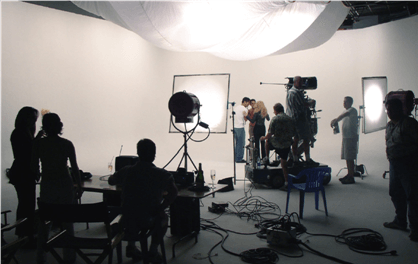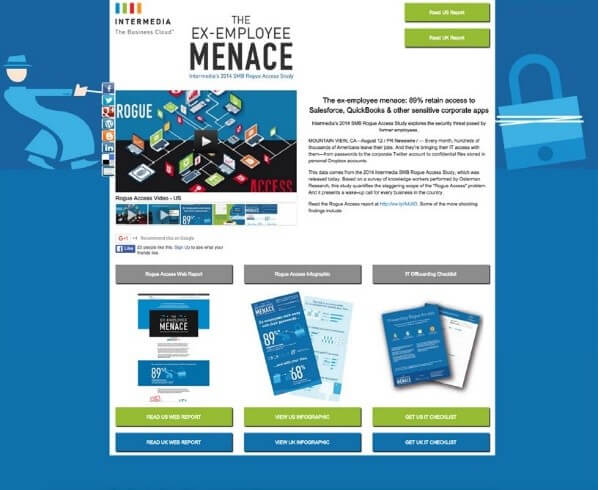Video Production Boot Camp: What You Need to Know for Your Next Production

It’s time to plan your next marketing campaign and determine which content and tactics to include.
Today, video can’t be ignored. Consumers, media and influencers are demanding it, so video must be a part of your strategy. And video, executed well, can deliver excellent ROI. But how do you go about creating the best piece for your campaign? It’s a process, and this guide will be your basic training, helping you get started, taking you through postproduction – plus a glossary of terms for those new to video and a case study – all the way to the successful release of your campaign.
Getting Started
Who exactly is your audience? Are they consumers, bloggers, moms, high income earners? Knowing your audience will also help determine where the video will be viewed. Without understanding who you want to reach, you risk spending valuable marketing dollars and precious manpower creating an off-message video.
Too often companies are interested in creating content without proper consideration of where it will be discovered and viewed. Sure, it’ll be on your website, but beyond that? You may want to get your video out there via an online microsite, television, strategic placement, and, especially if you’re looking to focus on millennials, social channels like Instagram and Facebook. For any audience, you should plan a multipronged approach with clear and concise objectives.
What To Think About Before Your Production
After you’ve identified your audience and outlined where they will be discovering your video, it’s time to delve into your video’s story.
- Brevity – Think short, clear and to the point, especially for online, social media and television.
- Story – Make sure you’re telling a story. Data and numbers alone are not engaging.
- Connection – Find a way to connect to the audience – the piece should illicit an emotional response.
- Brand – Keep your brand in mind, asking is this a story your company would tell? But at the same time, don’t forget to take risks. It can make your video better, even if it’s straying from your typical look and feel.
- Partner – Now turn to a trusted partner to craft your ideas into beautifully produced stories. Leverage people who specialize in content production. Any quality production company will help you ideate and, of course, execute your project.
With thoughtful consideration of your message and a well-chosen partner, your strategy will be strengthened.
Pre-Production Must-Haves
You will probably find that kicking off your video production has a lot in common with other creative and communications projects.
- Creative Brief – A brief is typically simplistic in nature but informs the partner producing the content of your goals and messages. The secret to the brief is to be completely honest and communicate what you really need to get across.
- Concept – With the brief completed, an experienced production company will come to you with some ideas or concepts on how to best execute your vision. You should get at least 2 or 3 concepts to choose from.
- Strategy – A good partner will also help strategize and unearth a unique angle for the story, the best format to present the story, and work within your budget without sacrificing quality.
- Call to Action – When communicating your plan and goals to your production company remember your audience and don’t forget a call to action. The call to action should be clear and direct.
Production Steps
Whether the concept involves a video shoot or will be an animated piece, you have to lean on your partner to make the video. At this point you’ve given them all the information they should need to make a great video. Here’s what will happen next:



- Scripting Phase – A script will be crafted in advance of filming or animation. This will have to be reviewed and finalized before moving on to the next step by all interested parties.
- Style Frames & Storyboard Phase – These are created before filming or animating and must be signed off upon before production begins. (Note that not all live action video calls for storyboards.)
- Shoot Day – This would be the day you would capture all of the interviews, b-roll shots, or scenes needed for filming and editing the final piece.
- Post Production:
- Animation – At this stage the production team brings the storyboard and images to life. The animators are working on moving the static images to create the animation. This is also the point for sound design and mixing, and editing in voiceover, if required.
- Live Action – For these productions, the final piece is edited together to tell the story. It includes editing the voiceover, interview and b-roll footage together, as well as sound design and mixing, and a final color correction.
It can take a few rounds but you if you’ve followed all these steps you should be very happy with the result.
Distribute, Distribute, Distribute
Now that you’ve produced your content, it’s time to make sure your audience gets to see it. Make sure you have a distribution plan, keeping that all important audience and how they like to consume video, in mind. Remember, video may be king, but without distribution, there is no kingdom.

Case Study: Intermedia Boosts Campaign Visibility with Award-Winning Video


Intermedia is a one-stop shop for cloud business applications, offering 30 essential cloud IT apps. The market-leading firm identified policy gaps that were creating security risks and commissioned primary research that confirmed suspicions: 89% of former employees retain access to sensitive corporate apps such as Salesforce.
To promote the findings, position itself as a thought leader – and generate leads – Intermedia mapped out an integrated PR and marketing campaign strategy. Video was planned as a key component of the multichannel program. To bring the research to life and capture their target audience’s attention, Intermedia engaged MultiVu Creative Services, the expert video production team at PR Newswire.
Intermedia partnered closely with MultiVu, working through every step of the process – Script, Style frames, Storyboards, Animation and Editing – to ensure the video was aligned with the overall theme and fit into the integrated campaign mix. The award-winning video was used in a multichannel campaign and distributed via a Multimedia News Release, a branded landing page and content promotion solution.
“The Ex-Employee Menace: Rogue Access” video racked up multiple successes:
- Generated more than 1,800 views
- Organic media pickup from influential tech publications
- Drove traffic to the online report
- Significant conversion of traffic into leads
- Won a Telly Award, which honors film and video production and web commercials
“MultiVu really understood our motivation in launching a campaign. They understood that this [video] is a marketing element that fits into an integrated campaign mix.”
- Dave Prager, Director of Communication and Creative Services, Intermedia
Visit PRNewswire.com to read Intermedia Boost Campaign Visibility with Award Winning Video.
Glossary Production Terms
To orient you in the video production process, we put together a quick glossary. This is just the tip of the iceberg, so speak to the experts before executing on any video strategy.
- Live Action Video refers to cinematography or videography, meaning the video uses real people and elements and does not use animation.
- B-roll is the footage captured to enrich the story you’re telling and allows you greater flexibility when editing. Instead of featuring only talking heads, you want other images you can cut away to that add dimension to your story.
- B-roll Package is a compilation of interviews and video footage that is edited for reporters and producers to use for coverage of a story. Stations can downlink this package via a satellite feed, stream, video download or request a hard copy.
- Post Production is when all the elements come together to compose the final piece. This could include editing of live action video, color correction, sound design and mixing, as well as animation.
- Sound Bite is a short clip of speech extracted from a longer piece of audio, often used to promote or exemplify the full-length piece. Videos can be told exclusively with the use of sound bites and not use any voiceover.
- Concept Boards are typically used prior to a full storyboard to help align the visual look and style of the piece. They’ll usually depict a few frames of a storyboard to get sign off on prior to creating all the storyboards.
- Storyboards are a sequence of pictures, either drawn or using photographs, representing the shots planned for an animation or video shoot. Dialogue, visual directions and other cues are part of the storyboard. They can be used for either a live action piece to help plan the shots in advance, or as the frames that would be used in an animation video.
- Animation creates the illusion of motion by the rapid display of a sequence of static images that minimally differ from each other. This is typically created with no live action production and can be 2D or 3D. Animators are artists who specialize in the creation of animation.
- Mixed Media is a video that includes both graphics/animation and live action.
- Voice Over is typically narration in a video or film. If the video was exclusively voiceover you would not see the person on camera, they would be narrating the whole story. Often you would hire professional voice over talent to be used in either live action or animation to help tell the story.
- Infographics – A recording of an interview from a viewer’s perspective; in other words, what viewers actually see once the station airs the interview.

Graduating From Boot Camp
Phew, that was a lot of information to get through. But congratulations, you’ve completed Video Production Boot Camp. Now that you are armed with what’s needed for your next video campaign, it’s time to find your production partner and get things rolling.
ABOUT THE EXPERT: LAURA GARNETT
Laura Garnett is the Senior Director of Strategic Operations & Head of Production for Content Services at Cision. Laura has over 20 years of experience in film, television and broadcast journalism. In her time at MultiVu, she has produced a wide range of videos, including corporate videos, PSAs, interstitial advertisements, b-roll packages, video news releases, and online videos for content marketing. She has focused on everything from health, technology, and consumer production pieces.
Prior to joining MultiVu Laura worked at the 24-hour NewsChannel NY1 on Time Warner Cable. As the Assignment Editor she directed reporters and field producers, and camera operators on what stories to cover. Laura lives in Brooklyn with her husband and two children.
Before NY1, Laura worked at HBO in the legal department, Lifetime Television as a production assistant, and Bloomberg News, writing and producing stories for their radio channel. She is a graduate of the University of Pennsylvania majored in American History.
About MultiVu
MultiVu, a Cision/PR Newswire division, produces and places compelling content strategically across multiple channels globally to deliver targeted results and drive desired engagement. Created in 2002 from network news veterans and media relations professionals, MultiVu has grown into a content creation and media strategy company, leading in the broadcast communications industry. More information can be found on www.multivu.com.





